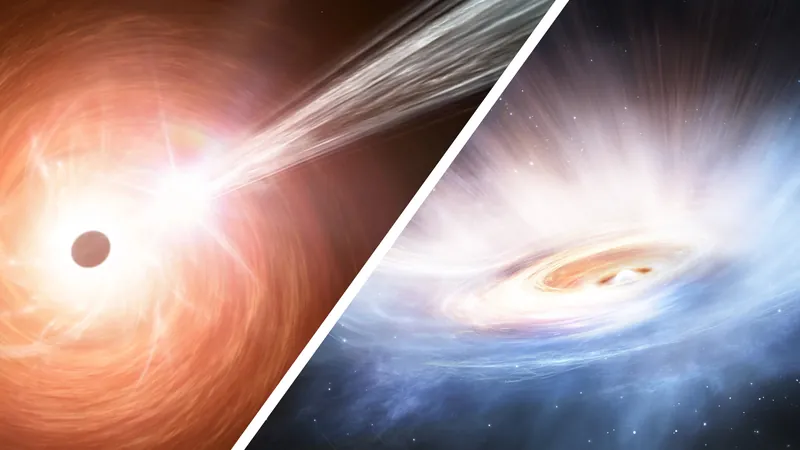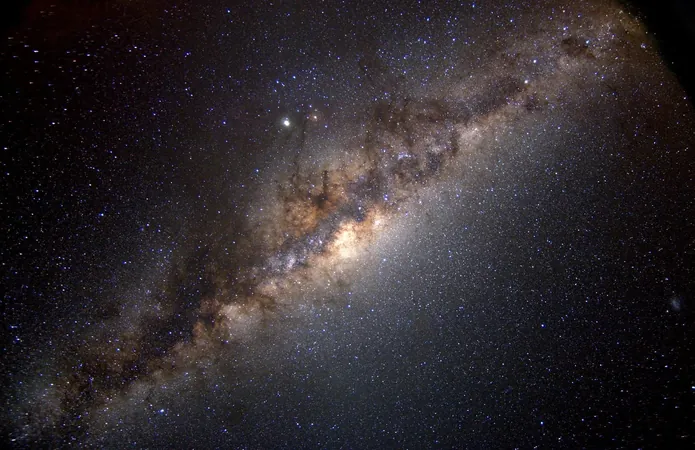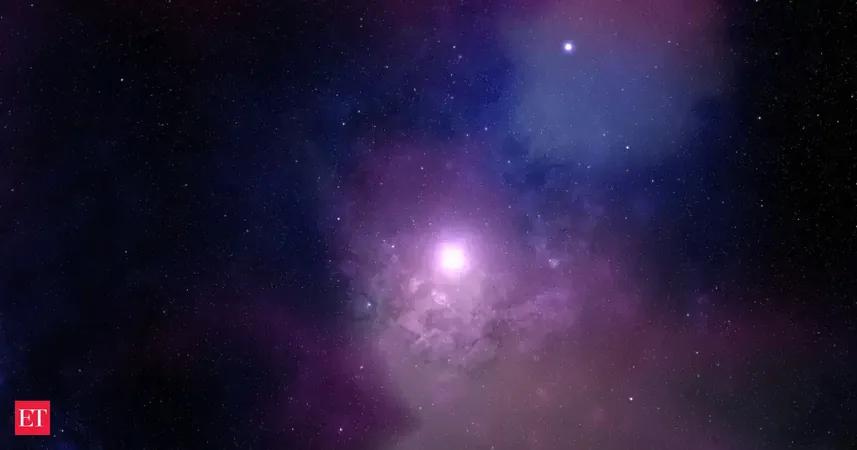
Astronomers Make Groundbreaking Discoveries with XRISM and Chandra Observations!
2025-09-21
Author: Benjamin
Mysteries Unraveled: Slow Winds from a Neutron Star!
In an exciting revelation, scientists utilizing the joint efforts of the Japan Aerospace Exploration Agency (JAXA), the European Space Agency (ESA), and NASA's X-Ray Imaging and Spectroscopy Mission (XRISM) have discovered a surprisingly slow yet dense wind emanating from a neutron star. This fascinating find provides vital insights into the cosmic winds that surround supermassive black holes.
XRISM's Stellar Investigation of GX13+1
Launched on September 6, 2023, XRISM is designed to capture X-ray signals from across the universe. One of its pivotal targets, the neutron star GX13+1, lies approximately 23,000 light-years from Earth. These neutron stars are the remnants of supergiant stars, whose cores have collapsed under gravity's weight, packing matter into densities comparable to atomic nuclei.
GX13+1 is part of a binary system, pulling material from a giant companion star into an accretion disk, which generates the X-rays that XRISM studies. Using its cutting-edge Resolve instrument, XRISM recorded an unprecedented level of detail in the X-ray spectrum—outshining previous instruments, including Chandra's High-Energy Transmission Grating Spectrometer (HETGS) by fourfold.
ESA's XRISM project scientist, Matteo Guainazzi, remarked, "When we first examined the data, it felt like we were witnessing a game-changing moment, fulfilling a dream we had pursued for decades." Coincidentally, when XRISM observed GX13+1, the star had recently brightened considerably.
Chris Done from Durham University noted, "It was incredible; the brightness surged from half its maximum output to a significantly more intense state, resulting in a wind thicker than we had ever witnessed before."
Eddington Limit and Cosmic Winds
As GX13+1 exceeded its Eddington limit—the critical threshold separating stable matter absorption from an outburst of radiation—material surrounding it was expelled, creating a cosmic wind. While supermassive black holes generate winds that can reach speeds of over 30% the speed of light, the wind from GX13+1 travels at an astonishing but much slower pace of around one million kilometers per hour.
"I'm still surprised at how 'slow' this wind is, despite its thickness. It’s akin to watching the Sun through a dense fog, causing everything to dim," quipped Done.
Chandra's Quasar Studies: RACS J0320-352!
Simultaneously, researchers leveraging NASA's Chandra X-ray Observatory have been scrutinizing a supermassive black hole, RACS J032021.44-352104.1, which is growing at an astonishing rate, surpassing its Eddington limit. Located a staggering 12.8 billion light-years away, this ancient black hole emitted its X-ray signals only 920 million years post-Big Bang, boasting a mass nearly one billion times that of our Sun.
Positioned within an active galactic nucleus, this quasar emits energy levels that outshine its host galaxy as it draws in matter. Recent observations from Chandra and radio telescopes across Australia and India revealed that RACS J0320-352 is growing at 2.4 times its Eddington limit, with lead researcher Luca Ighina of the Center for Astrophysics expressing astonishment at its rapid growth.
Distinct for its 'soft' X-ray emissions, predominantly low-frequency, RACS J0320-352's findings might also connect to newly discovered 'little red dots' from the James Webb Space Telescope, which astronomers believe could conceal active galactic nuclei.
Toward Understanding Cosmic Evolutions!
By examining black holes like RACS J0320-352, scientists aim to reconstruct their formation processes in the early universe. Co-author Alberto Moretti from Italy stated, "Determining the black hole's mass and growth rate allows us to hypothesize on its initial mass, helping us test different theories on black hole genesis."
Intriguingly, a separate study investigating a specific 'red dot' dubbed 'The Cliff' suggests it might represent a new type of celestial object—possibly a black hole star surrounded by a thick hydrogen shell, heated by AGN. Though conclusive explanations remain elusive, these studies highlight the extraordinary phenomena scattered throughout the cosmos.
Continued Exploration Awaits!
With intriguing questions still swirling around these astonishing discoveries, the cosmic narrative unfolds as astronomers explore the universe's vast mysteries. Expect to hear more as the findings from XRISM and Chandra push the boundaries of our understanding!









 Brasil (PT)
Brasil (PT)
 Canada (EN)
Canada (EN)
 Chile (ES)
Chile (ES)
 Česko (CS)
Česko (CS)
 대한민국 (KO)
대한민국 (KO)
 España (ES)
España (ES)
 France (FR)
France (FR)
 Hong Kong (EN)
Hong Kong (EN)
 Italia (IT)
Italia (IT)
 日本 (JA)
日本 (JA)
 Magyarország (HU)
Magyarország (HU)
 Norge (NO)
Norge (NO)
 Polska (PL)
Polska (PL)
 Schweiz (DE)
Schweiz (DE)
 Singapore (EN)
Singapore (EN)
 Sverige (SV)
Sverige (SV)
 Suomi (FI)
Suomi (FI)
 Türkiye (TR)
Türkiye (TR)
 الإمارات العربية المتحدة (AR)
الإمارات العربية المتحدة (AR)